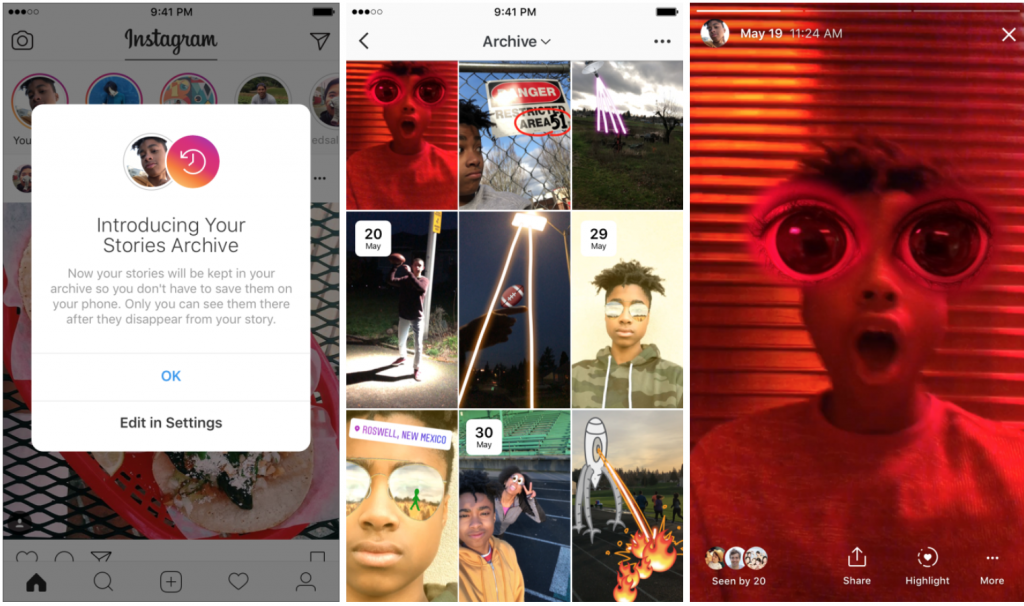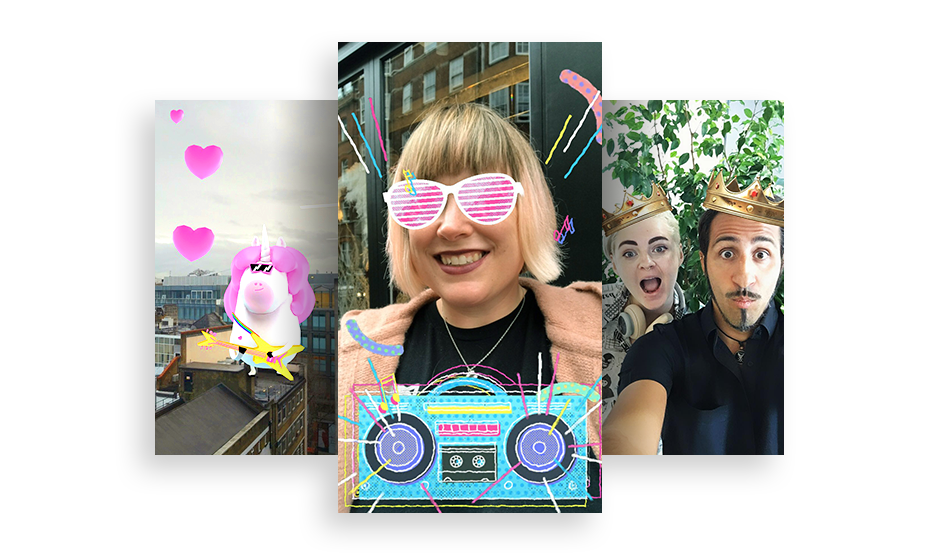A new year brings new challenges in social media marketing. Luckily, this is the best time of the year to review your social strategy.
2018 is officially here and this means that we need to plan our social media strategy for the year ahead. Every new year requires the necessary adjustments to ensure that we’re still using every social platform effectively.
If your social media marketing didn’t go as planned in 2017, this is the perfect opportunity to analyse what went wrong.
If you had a successful year with your social strategy last year, then you can still explore new ideas and achieve further success in 2018.
We’ve created a checklist to help you review your social media marketing and keep on top of the latest trends.
1. Analyze audience
Are you reaching the right audience? A closer look at Audience Insights on each platform can help you understand if you need to expand or narrow down your reach.
2. Analyze the platforms that you’re using
Use your insights from the past year to assess the effectiveness of each platform in reaching your goals. You don’t have to be active on every social network if it isn’t working for you – now is a good time to assess if you want to dial it back on certain platforms, or even stop using them altogether.
3. Measure your existing ROI
What’s your current social media ROI? Is it where you need it to be? Analyse your return on investment and get ready to set your expectations for 2018.
4. Review KPIs
Do your KPIs fit your goals for 2018? Now is a good time to update your KPIs if you want to change your social media marketing and strategy. Use your last year as a benchmark and aim for more ambitious, yet still realistic, targets.
5. Organize your new social calendar
It’s the right time to plan ahead and update your social calendar with the upcoming campaigns. Save time during the year by keeping an overview of what’s coming up.
6. Review the frequency of your social posting
Are you creating enough content? Do you create too much? Explore whether you need to focus on quality rather than quantity.
For example, Twitter may need more content than Facebook or Instagram, but you should still test whether your posts lead to the desired level of engagement. If not, reducing their frequency might lead to more people interacting with the posts you do make.
7. Mix up your content
Are you creating different content types? Maybe you can make 2018 the year that you invest in video, or experiment with GIFs in your brand marketing. Mixing up your content types can liven up your social presence, as well as taking advantage of the trend towards more visual content on the web.
It doesn’t have to create more work for you – some smart repurposing of your existing content can convert it into different formats without much additional effort.
8. Align social media with UX
If you’re using social media as a means of funneling people onto your website, whether through paid social media or organically, remember that the user experience of the destination is just as important as crafting the right campaign messaging.
If you want to bring new people to your landing pages, you need to make it as easy as possible for them to navigate and proceed to the next steps.
9. Optimize your social content for SEO
Social media may not be an official ranking factor for SEO, but it can still contribute to your authority. Build your social presence, aim for engagement and add genuine value to your content.
10. Involve social media in your marketing funnel
As social reporting becomes more advanced, it’s easier to analyse whether social media brings you any conversions. Add to your new year’s resolutions to improve your ROI and improve the number of conversions that come from social media. A closer look at the leads’ journey will help analyse how social media contribute to your marketing goals.
11. Align social media with your business goals
Is your social presence reflecting your goals? If your marketing strategy is focusing this year more on engagement rather than awareness, how can you use social media to reach this goal?
Also, if your business needs to improve sales, how can you use social media to make it the first point of contact for potential leads? If you start aligning your social media marketing with your business goals, you can reduce the likelihood of wasting your time with your social posts.
The major social media trends of 2018
If we had to predict the biggest trends in social media for 2018, we’d focus on these:
Instagram has seen great growth in 2017, and all the latest features indicate that it’s gearing towards an even more successful year. As it’s already one of the most popular platforms for users, brands are flocking there to make the most of its engagement.
Appealing visual content will be crucial, especially after Instagram’s decision to get rid of the chronological news feed. This means that brands need to try harder to show up in users’ newsfeeds.

The biggest bet of the year for Instagram is Stories and their impressive growth over the past year. There have been more than 300 million daily active Stories users and many brands have already experimenting with campaign promotion through Stories.
What makes this feature even more interesting now is the fact that Instagram has recently introduced “Highlights”, which allows users to retain their Stories for more than 24 hours. For marketers, this means that if you feel that a particular story could be used for a longer period, whether it’s for engagement, product promotion, or a live coverage, then you can highlight it to showcase it on your profile.
As Stories were designed as an ephemeral feature, it will be interesting to see if their popularity remains now that is no longer the case. However, for brands, Highlights provide a great opportunity to benefit from this engaging feature over a longer period of time.
Video marketing
Video content has been used quite extensively on social platforms during 2017. As more tools show up to simplify the creation of video content, 2018 is a great year to be investing in video.
The best videos combine eye-catching visuals and an engaging narrative to grab the user’s attention and keep it for a longer period than text and even images can achieve. However, just because you’ve produced a video doesn’t necessarily mean you can achieve this.
It’s important to keep in mind that most successful videos are:
-
- Short
- Use captions
- Capture the audience’s attention from the first seconds
- Tell a story to keep the audience interested
Moreover, it might be a good idea to experiment with videos of different lengths to test what works better for each platform. Different social audiences respond to different types of content, and you don’t have to post the same video on every single network.
How about creating a full-length video and splitting it accordingly for every social platform?
Augmented reality as part of social media

During 2017, we’ve seen the rise of Augmented Reality in social media, with Snapchat and Instagram investing in filters and fun yet engaging features. Snapchat is already monetizing its AR Lenses by making them available to brands, and Instagram is sure to quickly follow suit.
Moreover, we predict that 2018 will be the year that it becomes much easier to create AR content. Facebook has already introduced AR Studio, and Snapchat has launched their own Lens Studio, in a bid to facilitate the creation of AR content on their platforms.
Both are aiming to make AR content accessible to a wider audience, increasing the opportunities for engaging content. As with Pokemon Go, more brands are ready to explore how AR can improve their digital strategy and we’re expecting more successful use cases during 2018.
Chatbots for customer service

Facebook’s chatbots have also seen growth in 2017, with more than 100,000 monthly active bots now in use across the site.
Despite some initial concerns by marketers as to whether a bot can be used as part of a social strategy, more brands have quickly realised that a successful bot can improve customer service. Whether it be to provide information, answer questions, or allow customers to more easily place an order, there are several ways to involve a bot in your digital strategy.
However, while bots can save you time and be helpful, it’s equally important to maintain a human element in your interactions. Many brands have seen success with a hybrid strategy of letting bots deal with straightforward queries, and passing the interaction on to a human agent if it requires more intricate handling.
Overview
All in all, social media marketing in 2018 is a much more complicated beast, a far cry from the days when we would count Likes as an indication of success.
From social video to ephemeral content, augmented reality to intelligent chatbots, the components of social media marketing are unlike any other marketing channel, and as such they require a thorough knowledge of the overarching trends and how to apply them, an understanding of the different platforms, specific goals and dedicated tracking of the important metrics.
A closer look at the latest trends now will save you time spent trying to decide where to focus your efforts further down the line. Of course, this doesn’t mean that you can’t pivot and readjust your priorities at a later stage. Take advantage of the start of the year to get ready for another successful year in your social media marketing efforts.


